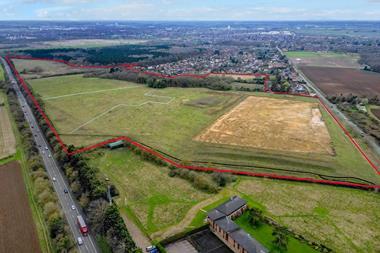Council spending on property is once again a hot topic after Property Week revealed that councils spent £1bn on commercial assets such as offices and warehouses in the first six months of the year.

But what about those local authorities that have invested in providing homes for people within their borough? While this has a more obvious connection with councils’ duty to provide services for their constituents, some have still faced criticism.
This was brought into focus by the Haringey Development Vehicle: a £4bn joint venture between Lendlease and the council that was scrapped earlier this month following opposition from hard-left pressure group Momentum, which led former council leader Claire Kober to resign.
Colm Lacey, the chief executive of Croydon Council’s in-house development company Brick by Brick, will be part of a panel discussing the challenges and opportunities of council-led development at Property Week’s RESI Convention next month.
We caught up with him to find how its developments are progressing and what advice he would offer other councils looking to do the same.

How many homes has Brick by Brick developed so far?
We just got our 44th planning consent in the space of a year and a half, and now have 1,500 units consented. We have started on-site on around twelve of those sites, and a further twelve or so will start on-site in the next six months.
Why did you choose to set up an in-house development company rather than work in joint ventures with the private sector?
Previously, there were situations where we did not benefit as much as the other joint venture partner. Values are growing quite quickly in Croydon, and we want to be able to reinvest that money into the local area. However, Brick by Brick doesn’t mean that the council is closed to future joint venture opportunities.
What are your future plans?
Five hundred units per year is our target in perpetuity. The key challenge in achieving that will be land, as it is for any developer.
Do you worry about a potential market slowdown?
We are in a relatively niche sector – private for-sale and shared ownership in outer London. Lots of markets have slowed down, but ours has not really been one of them. If things did go really badly, we could look at changing the tenure mix, for example to include more affordable rent – for which there is an unending demand from the council.
What do you make of the backlash to the council getting involved in housing development in places such as Haringey?
I believe the Momentum situation in Haringey was a specific response to a specific set of issues that had been going on locally. But it is important to remember that even if you are a council-led developer you still have to engage with local people. Some sites are more challenging than others, but broadly speaking the response to Brick by Brick has been positive.
What advice would you give to other councils wanting to set up their own development companies?
Firstly, have a really clear vision – some local development companies are perhaps trying to do too many different things. Secondly, be clear about delivery targets, and stick to them. Third, be ambitious. Many of our sites had previously been perceived as too complex or risky, but the benefit of developing them has been significant. Finally, use the skills that the council has in-house. About 25% of running a development company is development management, and the rest is other stuff – planning, keeping accounts, understanding the political landscape. All of those are skills which councils already have.































No comments yet